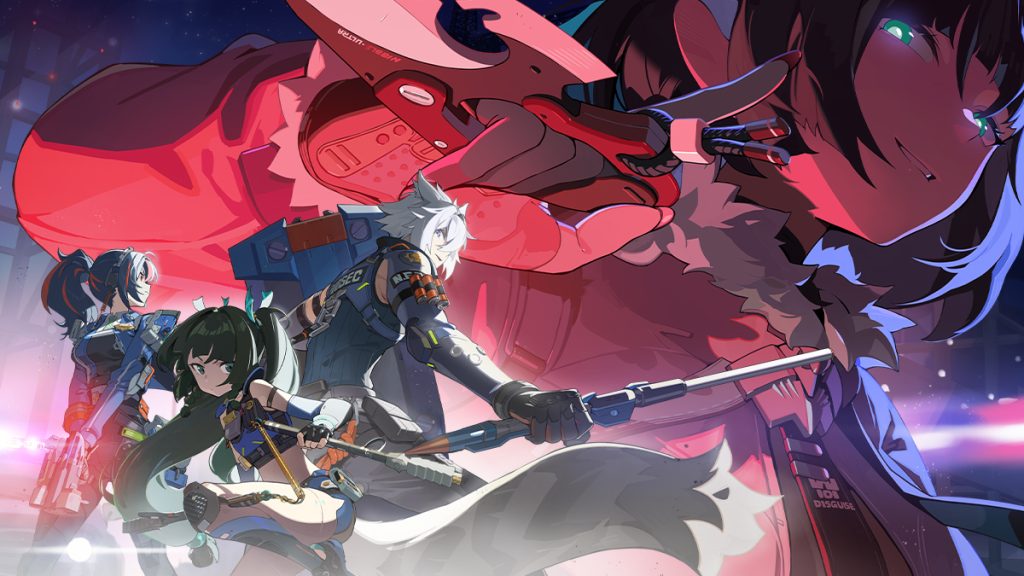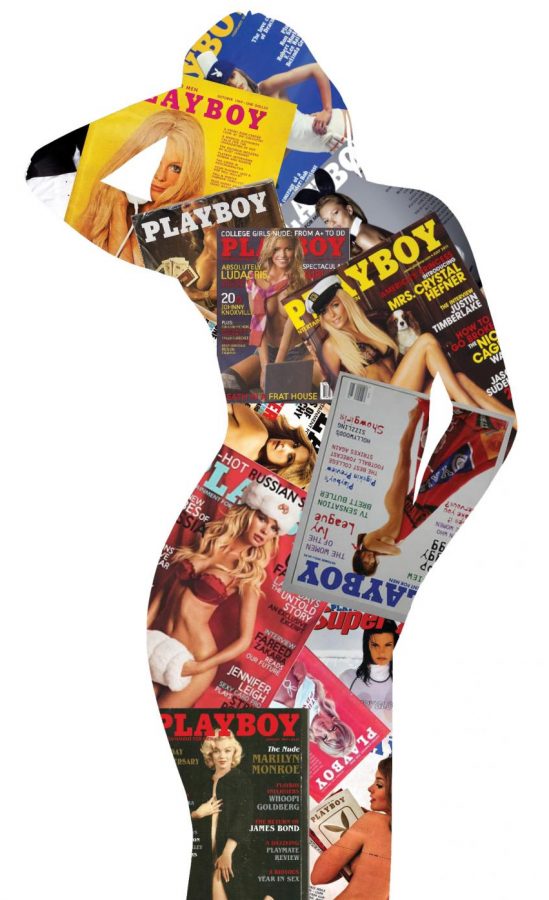The Male Gaze was first discussed by Laura Mulvey in her 1975 essay Visual Pleasure and Narrative Cinema. It refers to how visual media often depict women from the perspective of a heterosexual man. The women’s physical appearance and sexuality are enhanced for the pleasure of men. The base of the male gaze is the idea that women are there to be looked at, nothing more than an object of desire for men. The video game Zenless Zone Zero (ZZZ) by Hoyoverse exemplifies this.

Memes about the absurdity of female armour in video games have been circulating for a long time – pointing out the sexualisation and prioritisation of aesthetics. The reason they have scarce, unpractical armour is straightforward: to appeal to male players. “The commodification of the sexualised female body, used to sell anything”, as Ross (2010) stated. Although not all men enjoy them, a high enough number do to make it a profitable tactic. Enter Zenless Zone Zero: An urban-fantasy RPG with fast-paced combat and a compelling story. Some character designs and trailers lean heavily into that trope to attract a certain audience.
Let us look at the Jane Doe character trailer:
Firstly, viewers are directly self-inserted into the position of the person interrogated; they are the male gaze. The sexual undertones, suggestive body language, and flirtatious tone are apparent. An example is her action of licking an apple (1:10): The action is absurd (who licks an apple before eating it???) and serves no purpose other than seeming ‘hot’ for the audience. The animation change draws further attention to her tongue. The fact that in the next scene, she is licking a person proves ZZZ specifically want viewers to notice the tongue and feel attracted to it.
Overall, Jane Doe moves exaggeratedly – constantly swaying her body and hips, and coming very close to the viewer. The last frame (2:43) focuses on one body part, mimicking a heterosexual male’s stare. This apparent sexualisation not only aligns with the male gaze but also spreads the idea that a female character’s value lies in her sexual appeal. By adding this fanservice, ZZZ dumbs down the sexualised characters to nothing more than their appearance. Keep in mind, ZZZ’s fancervice is ‘tame’ compared to other games.

Some ZZZ fans argue that the game incorporates the “female gaze”, fanservice for heterosexual women. For instance, looking at Lighter’s teaser, there are many scenes of him shirtless. The difference, however, is that it is not the main focus, nor are any out-of-place over-sexualised scenes added. Furthermore, the female gaze lacks the cultural weight and dominance of the male gaze to make it equitable.

The deeper issue is the objectification of characters, regardless of gender. Reducing characters’ worth to their physical attractiveness not only harms their depth and the story’s. It also reinforces harmful societal stereotypes, that people’s only value lies in their appearance – and devalues anyone who doesn’t fit them.
Is there equality in equally sexualising characters of all genders? It may seem like a step towards fairness. However, it normalises the objectification and male gaze instead of challenging them. Progress would create characters whose designs fit the story and gameplay rather than pandering to specific audiences. But that requires society to trivialise the value for appealing appearances, and we aren’t that far yet.
Silhouette of a women featuring playboy magazine covers sexualizing women
References
Loreck, J. (2016) “Explainer: what does the ‘male gaze’ mean, and what about a female gaze?” The Conversation. Available at: https://theconversation.com/explainer-what-does-the-male-gaze-mean-and-what-about-a-female-gaze-52486. (Last accessed: 28.11.2024)
Ross, K. (2010) Gendered media: women, men, and identity politics. Lanham, MD: Rowman & Littlefield, pp. 65
Mulvey (1975) Visual Pleasure and Narrative Cinema. Film: Psychology, Society, and Ideology, pp. 803-816. Available at: https://learning.westminster.ac.uk/ultra/courses/_98071_1/outline/file/_5383261_1. (Last accessed: 28.11.2024)
Unknown “https://personalfav.co/blogs/the-good-good/can-the-male-gaze-be-dismantled” [picture]. Available at: https://personalfav.co/blogs/the-good-good/can-the-male-gaze-be-dismantled. (Last accessed: 28.11.2024)
Snoo61478 (2024) “Games be like” [Reddit]. Available at: https://www.reddit.com/r/Asmongold/comments/1at8ckv/games_be_like/. (Last accessed: 28.11.2024)
Zenless Zone Zero (2024) “Lighter EP – “Fearless” | Zenless Zone Zero” Zenless Zone Zero, [YouTube]. Available at: https://www.youtube.com/watch?v=t_Ng_b28uxM. (Last accessed: 28.11.2024)
Zenless Zone Zero (2024) “Jane Character Demo – “Deadly Interrogation” | Zenless Zone Zero”, Zenless Zone Zero [YouTube]. Available at: https://www.youtube.com/watch?v=5WCl2mtL4eE. (Last accessed: 28.11.2024)
Zenless Zone Zero (2024) “Zenless Zone Zero Version 1.1 Official Art” Hoyoverse [image]. Available at: https://www.hoyoverse.com/en-us/news/125120. (Last accessed: 28.11.2024)
Zenless Zone Zero (2023) “Zenless Zone Zero Poster – “Don’t Mess Up Your First Commission”” Zenless Zone Zero [image]. Available at: https://zenless.hoyoverse.com/en-us/news/102615. (Last accessed: 28.11.2024)
Zenless Zone Zero (2024) “Zenless Zone Zero 7.4 Official Release”, Zenless Zone Zero [image]. Available at: https://zenless.hoyoverse.com/en-us/news/123829. (Last accessed: 28.11.2024)
Schaeffer, C. and Fener, S. (2021) “Let’s Talk About Sexualisation” The Chronicle [photo]. Available at: https://hwchronicle.com/staff_name/chloe-schaeffer-21-and-sydney-fener-22/. (Last accessed: 28.11.2024)


First of all, I agree with some of the author’s viewpoints regarding the objectification of women and the male gaze expressed in the article, but I don’t think the author has chosen examples well. Firstly, the author believes that the debut trailer of the female character Jane in the game ZZZ contains strong sexual implications. I think this expression is inaccurate, but it is certain that there are some sexual implications. This is because, as a game with card-drawing content, the purpose is definitely to attract some so-called otaku male and female players to spend money on drawing cards in the game by dressing the characters in better-looking attire that accentuates their figures, similar to the concept of otome games. Consumers with real judgment will not be attracted by such content; it is just a form of downward compatibility. Playboy magazine also clearly states that it is a men’s magazine. Using examples that have already stated their service to a specific group cannot well demonstrate the pandering caused by the male gaze, just as the author also agrees that there is a female perspective in ZZZ. However, I believe that these represent focal points. I don’t think the presence of conventionally beautiful women in media works necessarily catering to male aesthetics or instilling sexual appeal in female characters. In this more open and inclusive social environment, they can also represent female power. Rather, it is those works that lack content and only exist to cater to political correctness that are the greatest consumption of female power and minority groups.